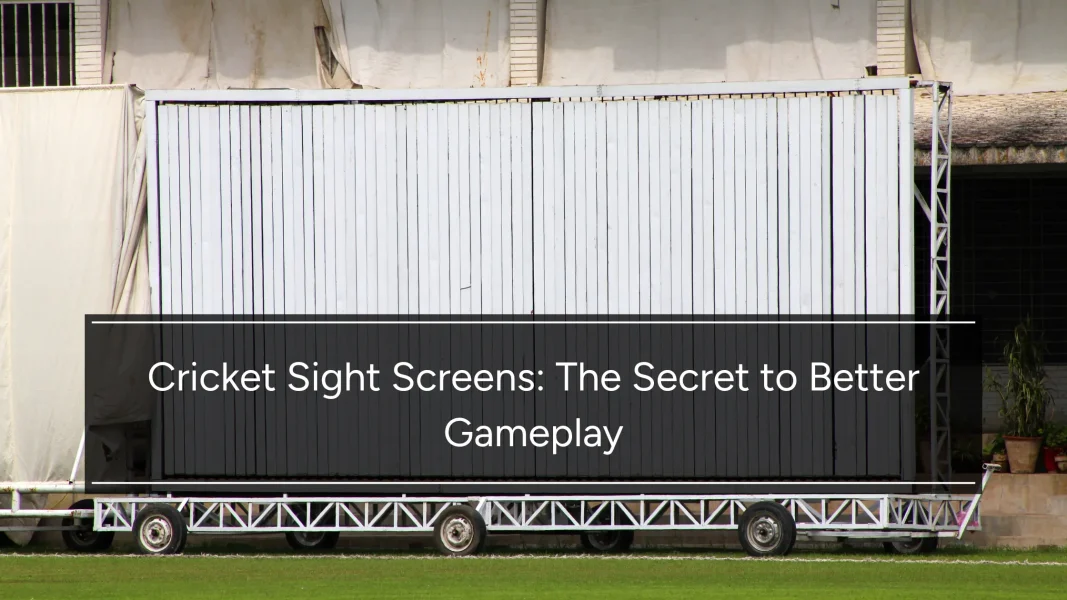New Cricket Scoreboard Range
Cricket is one of the most popular sports in the world and is enjoyed by millions of...

When it comes to cricket, every detail counts. From the pitch surface and equipment to the weather conditions. Every cricketer looks to perfect their skill to improve their performance, but an often-overlooked secret to better gameplay is cricket sight screens.
In this article, we’ll explore what a cricket sight screen is, why they are essential for enhanced gameplay, how to choose the right sight screen for cricket and also look at the different types that are available. Let’s begin with a look at what they are.
Sight screens for cricket are large rectangular screens that are placed at both ends of the cricket pitch behind the bowler. Their aim is to make it easier for the batsman to see the ball as it is bowled and also helps the bowler fine-tune their bowling accuracy.
Sight screens for cricket are essential for professional and competitive settings, such as professional grounds, but are also becoming more common at local clubs and schools.
While it may seem like a simple concept, sight screens can help combat distractions such as advertising boards, players moving around the field or the crowd. It acts as a way to block these background movements to help the batter focus on the ball and also be able to judge the line, length and spin more accurately.
Without a cricket sight screen, it can be hard to see the ball, especially when it’s bowled at high speeds. They can also help improve safety by enhancing ball visibility and ensure a fair competition for both teams.
There are many different types of sight screens available, but some of the most popular choices include:
The main choice cricket clubs face is whether they want a cricket sight screen mesh or a solid panel one. Both offer different benefits, so the choice will really depend on your needs, storage and budget.
Some of the pros and cons of cricket sight screen mesh include:
Whereas some of the pros and cons of solid panel sight screens are:
Some cricket sight screens rotate, so you can choose between a black background or a white background. This is handy in larger clubs where some teams may play with white balls and some play with red balls.
Typically, the white sight screen is used for a red cricket ball, and black sight screens are used for a white cricket ball. Using the right colour sight screen and having this flexibility is crucial for large clubs.
If you’re considering buying a cricket sight screen for your club, here are some key features to look out for:
As we just mentioned, having cricket sight screen wheels can help make it more portable. This is particularly important for grounds without dedicated staff. It also makes it easier to adjust the positioning of it to block sunlight. Finally, they can be wheeled into place quickly, making them ideal for shared grounds.
Regular maintenance and proper care of your cricket sight screens are crucial to keep them performing time and time again. Follow these tips to get the most from your sight screen:
Knowing which cricket sight screen is best suited to your ground will depend on your unique requirements, but here are some things to consider:
Sight screens may seem like a simple part of the game, but they offer invaluable improvements in performance, fairness and player safety. At Stuart Canvas, we offer a wide range of cricket sight screens for every type of ground. If you have any questions or would like to discuss your club’s requirements, please get in touch.
Also read: Clearer Vision, Better Shots: The Power of Cricket Screens
